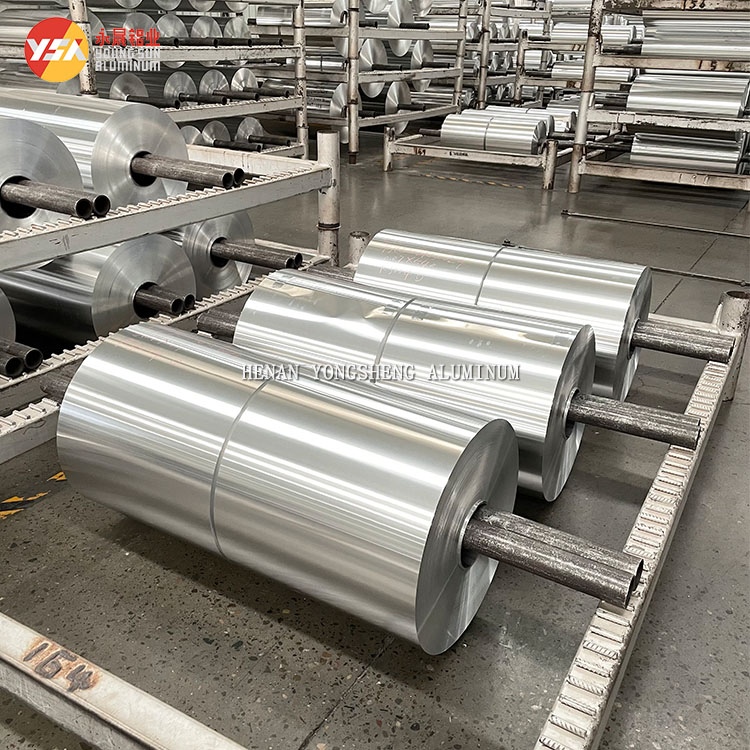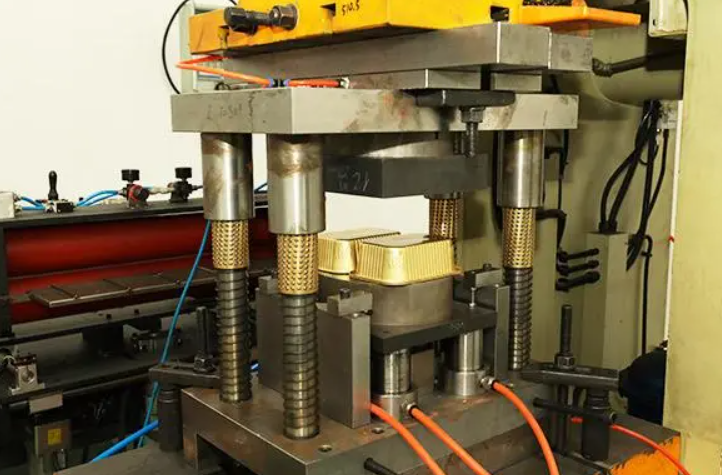Aluminum foil food containers are popular for their lightweight, durability, and eco-friendliness, making them ideal for food packaging, particularly in the aviation and takeout industries. The manufacturing process involves several key steps:
Aluminum Foil Material Preparation
Food-grade aluminum foil is commonly used for making food containers, with 8011 and 3003 aluminum alloys being the most prevalent. These alloys are chosen for their excellent formability and corrosion resistance, which are crucial for food packaging.

Slitting of Aluminum Foil Rolls
Large rolls of aluminum foil are slit into sizes required by the container molds. This process ensures the aluminum foil maintains flatness and dimensional accuracy for smooth subsequent processing.
Lubrication and Stamping
To reduce friction and prevent damage during stamping, a layer of lubricant is applied to the surface of the aluminum foil. The lubricated foil is then fed into stamping molds, where it is pressed into the desired container shape.

Edge Trimming and Finishing
The edges of the stamped containers might have burrs or irregularities that need trimming. Trimming machines smooth the edges to ensure they are neat and won’t cause injuries during use.
Cleaning and Drying
Stamped and trimmed containers are cleaned to remove any lubricants and contaminants from the manufacturing process. After cleaning, the containers are dried to ensure they are hygienic and free from moisture.
Surface Treatment and Printing
Depending on customer requirements, surface treatments such as coating or embossing can be applied to enhance the container’s appearance and brand recognition. Food-grade ink printing is also done to add logos, usage instructions, or other information.
Quality Inspection and Packaging
The finished containers undergo rigorous quality checks to ensure they meet size, strength, and cleanliness standards. Approved containers are then packed into designated packaging boxes, sealed to prevent contamination or damage during transport and storage.
Conclusione
The manufacturing process of aluminum foil food containers includes material preparation, slitting, lubrication and stamping, edge trimming, cleaning and drying, surface treatment and printing, and quality inspection and packaging. Each step is meticulously controlled to ensure the final product is high quality, safe, and hygienic. As awareness of food safety and environmental protection grows, the demand for aluminum foil food containers continues to rise, driving ongoing improvements and optimizations in the manufacturing process.


